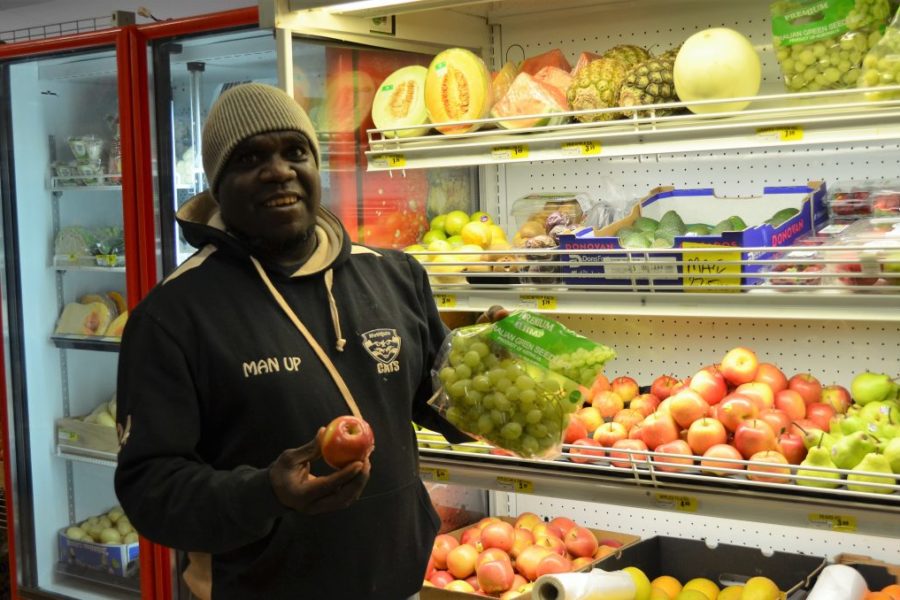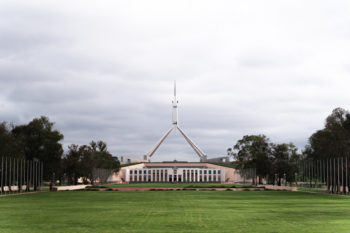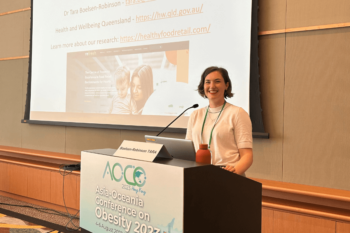Aboriginal communities hungry for food security

DATE
TYPE Media coverage
A collaborative research project with remote Aboriginal communities on the Anangu Pitjantjatjara Yankunytjatjara (APY) Lands in South Australia saw an increase in the amount and proportion of healthy foods and drinks sold – the first such improvement in over 40 years.
The increasing cost of living in Australia has put a new spotlight on the issue of food security – when all people, at all times, have physical, economic and social access to sufficient, safe, and nutritious food to meet their dietary needs and food preferences for an active and healthy life.
This renewed focus also highlights that remote Aboriginal communities continue to be most impacted by food insecurity which is a significant contributor to poor health, underscored by ongoing effects of colonisation, entrenched poverty, social disadvantage and systemic failures. Investing in Aboriginal nutrition and improving food security, particularly in remote areas, will be key to closing the gap on health and life expectancy.
Results of an innovative research project with remote communities have demonstrated how rapid, effective improvements can be made to reduce risk of diet-related chronic disease.
The project co-designed by Ngaanyatjarra Pitjantjatjara Yankunytjatjara (NPY) Women’s Council, Nganampa Health Council, Mai Wiru Regional Stores Aboriginal Corporation and The Australian Prevention Partnership Centre targeted availability, affordability, accessibility and promotion of healthy food to improve diets and food security in the APY Lands.
Funded by the Medical Research Future Fund (MRFF), the project harnessed community leadership to implement strategies to improve food supply, and practical activities – such as cooking demonstrations, development of recipe posters, and food preparation with kids – to fuel demand for healthy choices.
Professor Amanda Lee who was involved in the project said because most remote Aboriginal communities have a single food outlet, store sales turnover data is a good indicator of community members’ dietary intake. She explained this study provided insights into broader nutrition issues.
“We have been assessing food security and dietary intake to inform interventions on the APY Lands since 1986 and, despite everyone’s efforts, nutrition and diet-related health had been getting worse, reflecting the dominance of unhealthy products and rising food insecurity in broader Australia,” Professor Lee said.
“But since this concerted intervention in 2018, participating stores have improved the number, range, quality and price of fresh fruits and vegetables, lean meats and wholegrain cereals, improved product placement and promotion, and provided healthy takeaways, to help make healthier choices the easiest choices.”
“The amazing results included the first decrease in over 40 years of energy intake from unhealthy food and drinks – down from 45% to 39%. We saw a reduction in sales of sugary drinks from 60% to 40% of all drinks, and a 45% increase in sales of fruit and vegetables. These results were consistent with a similar project run by the Minjilang community in Arnhem Land in the 1980s, where biomedical indicators of nutritional status were also assessed every three months, which showed dramatic improvements including reversal of diabetes, reduction in heart disease risk, and normalisation of body mass index (BMI).”
Professor Lee said it was important for the decision-making to remain with the communities, to build on vast local and traditional knowledge and ensure data sovereignty.
“The key was to work collaboratively to strengthen store nutrition policy, monitor implementation, feed results back regularly, and support community activities to increase demand for healthier options,” she said.
The project showed there was a direct relationship between product placement, price and promotion in food outlets and dietary intake in the communities. Drink fridges were moved to the rear of the store, and no longer stocked large sizes of sugary drinks. The price of healthy choices, such as fresh vegetables and fruit, lean meats and water was cross-subsidised. While food remained expensive relative to the very low incomes in remote communities, families could save over $50 per week by switching to a healthy diet.
This study confirmed that multi-strategy, community-lead nutrition projects focusing on both supply and demand can improve Aboriginal food security and diet rapidly, providing more evidence that they should be implemented nationally at scale. Importantly, the project took a strengths-based approach and built on Indigenous knowledges. The main dietary message was to “eat store foods that are most like bush foods”. All organisations worked with the communities to improve capacity and build on traditional food knowledge and skills.
This story appeared in INSPIRE Issue 24, 2022 – Rural, regional and remote research.



